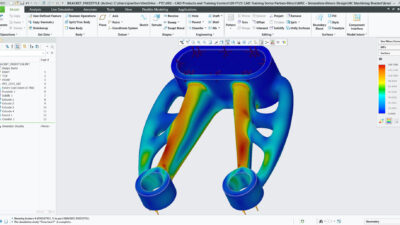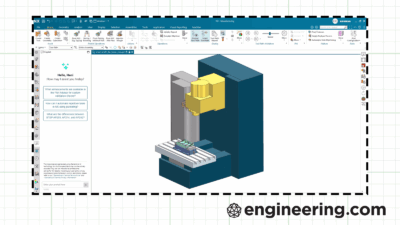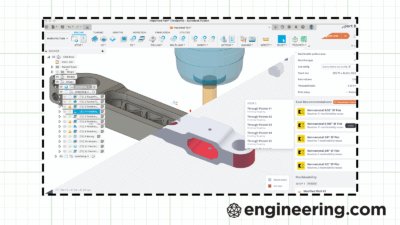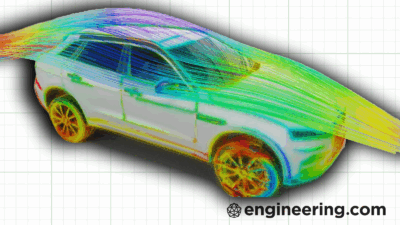Revolution in Simulation co-founder Malcolm Panthaki explains how AI may finally make simulation accessible—and why experts can’t go away.
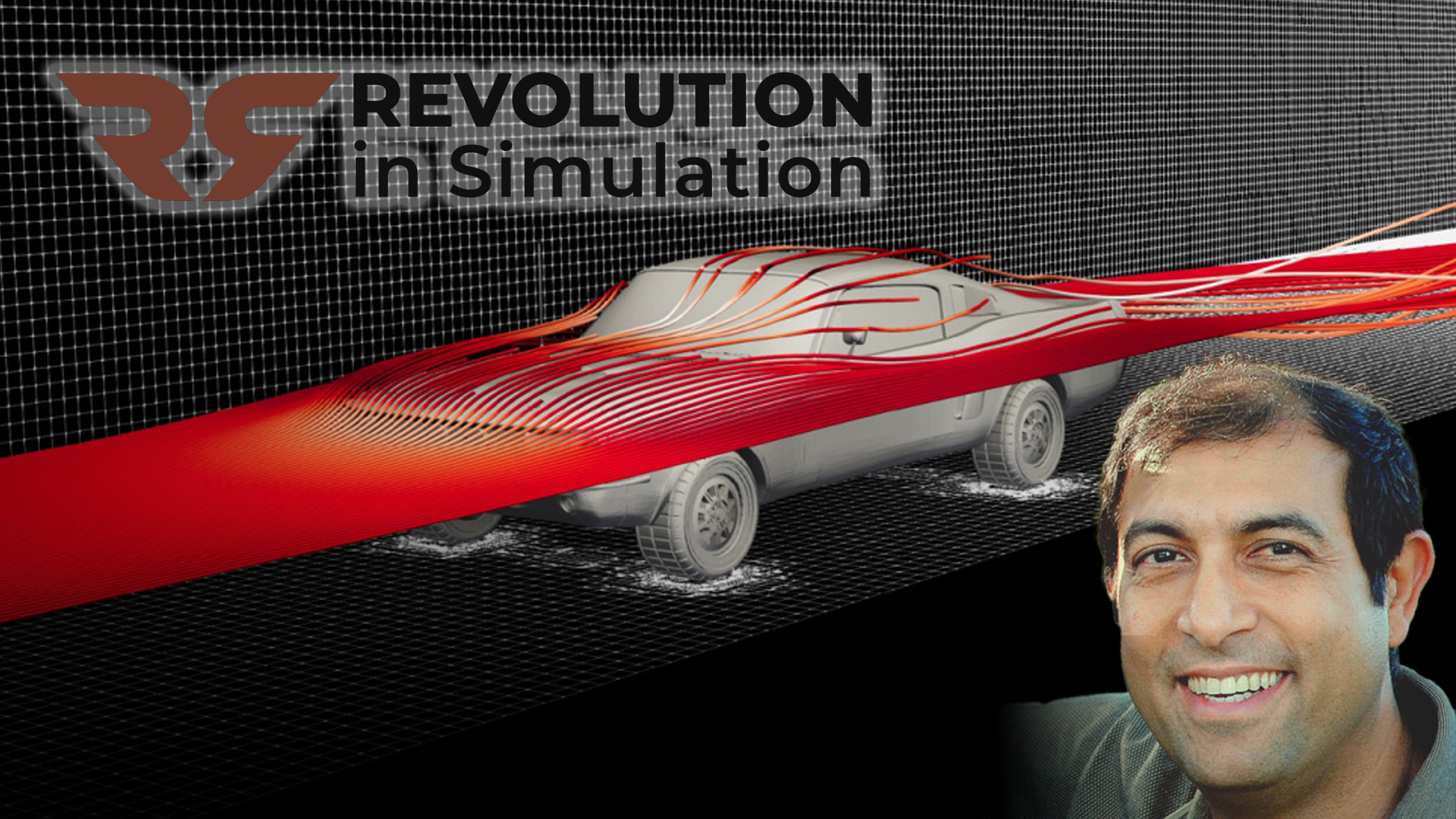
There’s a revolution brewing in simulation, but it’s not the one you think.
As much as AI is now impacting simulation technology, it’s a means, not an end. The end, as advocated by the non-profit organization Revolution in Simulation, is democratization—making simulation accessible to as many users as possible.
Engineering.com first wrote about Revolution in Simulation (aka Rev-Sim) shortly after the organization’s founding in 2018. But a lot has changed since then, so we caught up with co-founder Malcolm Panthaki to see how Rev-Sim has kept up with the times.
A veteran of the simulation industry, Panthaki shared his thoughts on why simulation democratization is so critical for engineers, his frustration with the stubborn resistance towards it (often from the experts themselves), and his excitement that there might finally be a path forward: AI.

The following transcript has been edited for clarity and brevity.
Engineering.com: Why did you start Revolution in Simulation?
Malcolm Panthaki: This online community was started by a small group of us in 2018. We launched it at the NAFEMS CAASE conference that year.
We founded Revolution in Simulation with a goal towards covering the new, exciting, cutting edge uses of simulation, providing a single place where users could go to find information on various topics related to simulation at the cutting edge, and to be able to connect with software vendors or services providers.
It’s never been a for-profit organization, so all of the money coming in from our partners has all gone mostly towards the site, a small amount towards paying for some time of people, outreach, etc. And so a lot of the time that has gone into it has been volunteer time.
We now have over 6,500 members, and it’s a very targeted group of people that are very much part of simulation in terms of their roles in companies, everything from VPs of engineering down to the actual simulation practitioners.
Is Rev-Sim still focused on the idea of simulation democratization?
Democratization still remains the crux of everything Rev-Sim stands for. And you know, this whole new area of AI/ML furthers the cause of democratization of simulation, the way I see it.
For eons, simulation tools and technology have been the domain of only the experts in the software. The software has been very complex, the results are often difficult to understand, assimilate and assess in terms of their validity and accuracy, and the kinds of settings and controls provided by the various high end software are difficult to understand unless you’re an expert. And that’s been the case for decades.
Democratization is the packaging of that underlying complex technology. It doesn’t remove the complexity. It uses this complex simulation and packages it in a form that people who don’t need to understand the underlying workings of the software can safely use.
Technology, in all sorts of domains, always starts out being very complex to use. But it never explodes in its usage until it’s democratized. And there are umpteen examples in the general technology area, all the way from hardware to software. Simulation has just been slow coming to the table.
That has improved over the last 10 years a fair bit, in terms of the vendors understanding that that’s important, and the experts in these companies understanding that their value doesn’t get diminished when they package this technology and make it usable to a much wider audience in their own companies.
So yes, democratization still is very much central to what we do, because that continues to be at the cutting edge of simulation. It isn’t a given that simulation has been democratized. Unfortunately, though I started thinking about this and working on this from the second half of the 90s and into the 2000s, we’re still where we are now. However, AI/ML is the exciting new technology that, almost by definition, democratizes what’s underneath the covers.
How do you see AI being used in simulation, and how is it impacting democratization?
AI and machine learning is very reminiscent of the of the technologies that have been used for quite a while, the reduced order models that are essentially lookup tables now.
AI with ML does a bit more, but how it does that bit more, and how much more it does, is a bit of a mystery. It’s not clear how much better it does than the reduced order models. It’s very clear that it does, but how it accomplishes it is a bit more hidden behind the training of these deep neural networks. And so what users are able to do is to very quickly feed it some inputs within the scope of the trained algorithm and get results. And it’s able to do it quite rapidly. And the kinds of results it’s able to spit out are quite stunning. You can actually get your three dimensional contour results that the traditional simulation tools would take hours, days, sometimes weeks to compute.
One of the most persistent objections to democratization is that it’s dangerous to put these tools in the hands of non-expert users who don’t fully understand the process or results. What’s your response to that objection?
First let me just say that it’s a tired old response, and I’m pretty tired of hearing it.
Having said that, it’s a valid point. But then what the experts have to do is to ensure that they take their expertise and they take the complexity and power of the underlying tools, and they are responsible for packaging it in a form that’s generally safe to use.
Is there still potential for results to be wrong and misinterpreted? Absolutely. So instead of saying that no one else can use it, what you do is you put the right safeguards around it, and you ensure that the people who use it, use it directionally, think about various options, play with it, come up with what they think makes sense, and then go right back to the experts to validate the results. I think that’s important, especially given the criticality of how these data are used, that the experts are involved to use their expertise, their experience, their knowledge, to validate. But this is no excuse for not putting this technology in the hands of 10 times, 100 times more people than currently use it.
Does your answer change at all with regards to AI? You just said that how it works is a bit of a mystery. So is it possible to put those expert safeguards around it?
I’m glad you raised that. Yes, AI makes this usage more dangerous. Absolutely. In fact, we’re seeing this with the general use of these large language models. There’s a lot of talk now about hallucinations, as they put it. And part of it is the training data is not clear. What’s under the covers is not clear. The quality of the training data is not clear. How far from the training data the algorithms could stray is unclear. And the fact that they stray can be good and bad. It’s not always bad that they stray.
So yes, the danger is higher, because it’s a new technology, and because it’s still unclear even to the experts how much and how well these algorithms need to be trained. How broadly should they be trained? How narrowly should they be trained? This is a work in progress. So that has to be taken into account when they’re used and trained. I think over the next few years, we, and the experts in particular, will get a better feel for that.
Should that stop work in this area? Absolutely not. And I would say that there are now pressures beyond the experts, pushing the experts to release their stranglehold on the underlying technology. It’s way too powerful from a competitive perspective, way too important for the experts to simply say, sorry, there are even more dangers here. You can’t use it. The experts just need to step up to the table and make this technology safer and put the guardrails around it.
Where do you think all this is headed? What do you think simulation technology could look like in a decade?
The underlying calculation tools are essential and are getting more and more complex from the perspective of the coupled physics that they can handle. That’s not going to go away unless there’s some magical new physics simulation prediction tools. And AI is not that, because it doesn’t even work without the underlying data, which is essential.
Those tools will continue to be improved and put in the hands of experts. I can’t see anything different happening. It’s been going on for 40 or 50 years, and unless we come up with a magical new mathematical tool (and there have been many that have popped their heads up and have helped, but have never really taken over) that’s going to continue, and those tools are going to get more and more powerful.
The hardware is going to be more and more available, better and better, and the experts are going to have more and more powerful tools in their hands to predict the behavior of complicated systems, including those that use electronics.
Democratization, though, will keep getting better, and these tools will get used in in all sorts of different arenas. One of the relatively new uses has been with automated driving, driverless cars, where simulation plays an important part in improving the underlying algorithms. And there are many others. If manufacturing gets more and more sophisticated, the need for simulation goes through the roof. And that’s not just for the materials aspects of manufacturing, but the automation, the actual assembly and packaging, and then the back end logistics that are required to keep the supply chain cranking out just in time materials and other logistics related to making manufacturing efficient, economically and otherwise.
Those are the areas we’re going to see better and better applications of simulation. And it has to become more and more democratized, so that it’s in the hands of anyone and everyone that needs to ask the questions and come up with quick and accurate answers.
How can engineers contribute to simulation democratization, and what advice would you have for them to stay on top of it?
You’re asking me to come up with something new that hasn’t been tried over the last 25 years? I’m really not sure. As I look at the power of democratization, to me, it’s a foregone conclusion that it’s absolutely essential. But that’s not what the market has said. And I just don’t know why. AI seems to have changed it, because it’s just simply everywhere, and it’s incredibly sexy, and nobody’s taking no for an answer. Great. But what’s different about that from everything else that’s been said about democratization for the last 25 or 30 years? I don’t know.
I had an interesting conversation recently with a company that happens to be a Rev-Sim sponsor. They’ve been tearing their hair out with their technology not being more broadly accepted, and very similar to the democratization aspect of what we just discussed, their technology is a no-brainer. It has to do with the back end of the simulation results and what gets done there, and how slowly that information gets assimilated within the broader product teams. And we were talking about the fact that they haven’t been making much progress, because their focus is on the simulation community, which is tiny compared to the rest of the product development community.
Maybe they need to switch how they view it entirely, making their software free to the simulation engineers. It’s like a giveaway. But the real value is with the 10 or 100 times more people in the product teams that could more quickly and easily and visually assimilate those simulation results with this technology. And market it to them. Where you suddenly have a much, much larger market, rather than just the simulation engineers.
And maybe that’s it. Simulation by itself is worthless. There’s no utility by itself. Its utility is in the entire larger product teams. And those are huge and important and have much more funding. So maybe all of these technologies need to get marketed to the product teams, and there’ll be much quicker understanding of its value, and their much larger budgets will be able to fund this work. Just a thought.
Do you find a lot of simulation experts resist this kind of change?
Absolutely, and that hasn’t changed too much in the 40 years that I’ve been in the industry.
Have you come up with any effective tactics to win them over?
Other than threatening them with a baseball bat? I’m not sure. I think when that pressure comes more from the product teams, I think that there’ll be more acceptance. And again, please keep in mind, I’m not in any way saying that all of these very powerful and difficult technologies need to be released from their chains. No, they can’t be.
They are difficult to use. They are difficult to get good results from. And you need that expertise. But that power needs to be put safely in the hands of others, and the simulation experts need to put in the time and the effort to do that packaging and to figure out the best ways to do it. And companies who invest a lot of money in their simulation teams and software and hardware should be pushing the people up above to make it available. And I think they’ve just heard for so long from them that it simply cannot be done, that that’s been accepted, and I think that’s absolutely erroneous. And I want you to quote me on saying that.
Do you have any final thoughts on Revolution in Simulation to share with simulation users?
I think there’s still a place for Revolution in Simulation. I hope that it continues for a while and provides what the simulation community needs as a one stop shop for cutting edge simulation resources. I wish that the more established simulation user organizations would simply take over that responsibility, and obviate the need for this very small and minimally funded organization that Rev-Sim is.
And I think that simulation is here to stay. It’s not going anywhere. And it’s exciting that there’s a brand new technology that’s being applied to it, and I’m sure it’ll continue to be the case over the years.
